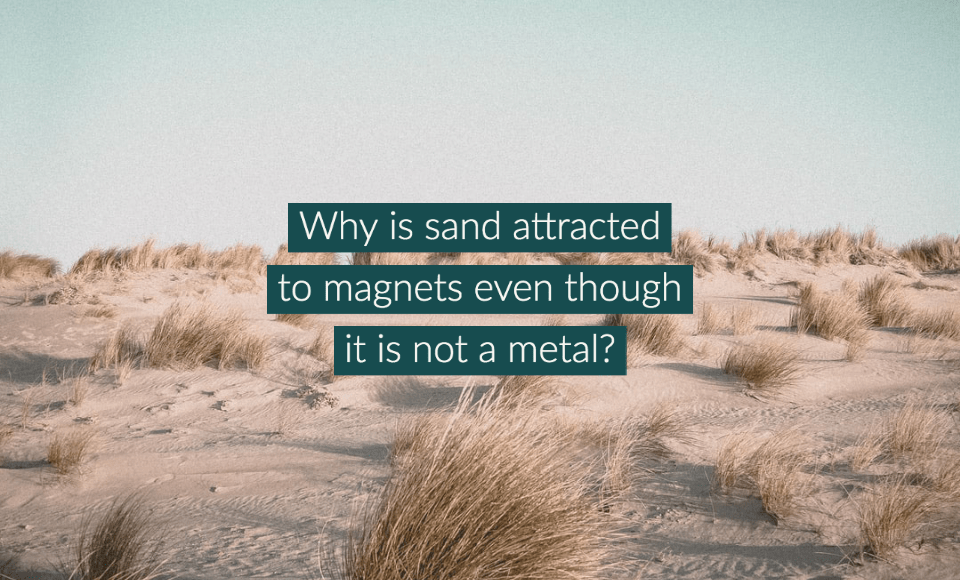At some point in your childhood, you might most likely have played with magnets at home or school. It is fascinating how magnets can attract things towards them regardless of what shape the magnet is. However, magnetism doesn’t work on glass, plastic, or paper. Only those objects made of metals, such as iron, cobalt, or nickel, can attach to a magnet. Try to use a magnet on cloth, and it won’t do its magic.
However, have you tried using a magnet on sand? You might be surprised that magnetism may work on it. But how does it so when sand isn’t metal? Is sand magnetic at some point?
Well, claiming that all sand has magnetic or non-magnetic properties is quite infeasible, and can be widely inaccurate. First, let’s look at how sand is formed. Rocks break down through a natural process called weathering, which takes thousands or even millions of years to happen. Different environmental factors and elements decompose rocks, minerals, chemicals, and travel down streams, rivers, and oceans, continually breaking down and forming sand along the way.
Sand varies depending on how it forms and what composition constitutes it. The makeup of desert sand would be very different from the makeup of beach sand. Quarts generally compose the most type of sand. But, white sand beaches on tropical islands are mainly composed of calcium carbonate, produced by the decomposition of organic elements through time.
With that, sand types on the planet and their composition can immensely vary, so it would be very hard to which of which possess magnetic properties without knowing what’s composes it. What is know so far is one kind of sand usually is magnetic, the black sand.
Black sand is clearly black or dark in color. It is typically found near volcanoes or may be produced via a volcanic eruption. However, they can also form through weathering of heavy minerals. Often, black sand is composed of magnetite, which is an iron-brimmed mineral or a form of iron oxide. Its grains are very small, opaque, extremely black, and magnetic, which is why sand tends to attach to a magnet. If you see other types of sand with the same behavior, chances are there are magnetic particles in its composition.
You can mostly find black sand on many beaches in Hawaii, such as Punaluu, Kehena, and Honakalani. Hawaii has five main volcanoes, which explain the existence of these black sand beaches. However, there are also other black sand beaches all over the world. Iceland, Mexico, and New Zealand also boast their own incredible stretches of black sands.
So, the next time you visit a black sand beach, do not only enjoy the picturesque sights. Try to bring a powerful magnet with you. Then, play and test the magnetism of the sand. You will notice how sand may stick like how iron fillings attach to a magnet during an experiment on your chemistry class. Be cautious, though. Black sand tends to get significantly hotter than normal sand due to dark color, which absorbs more heat. If you’re amazed at how magnets work on the sand and like to share with your friends, remember that it is prohibited to take large amounts of sands with you.
More Readings:
You Might Also Like:
- What is a magnetic field flip?
- How do deserts form? Where are those sands coming from?
- What creates ripples like undulating patterns of sand in the desert?
- Have the oceans always been salty?
- Which has been the highest officially recorded sea wave?
- Which direction the needle of a compass will point to if the compass is on the North Pole?
